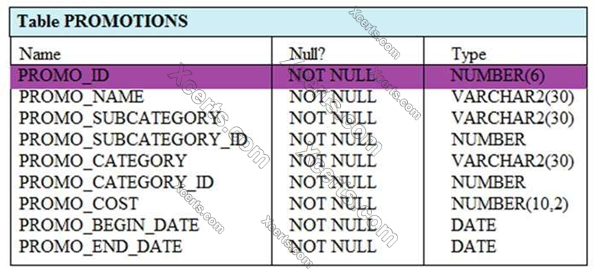View the exhibit and examine the structure of the PROMOTIONS table.

You have to generate a report that displays the promo name and start date for all promos that started after the last promo in the ‘INTERNET’ category.
Which query would give you the required output?
- SELECT promo_name, promo_begin_date FROM promotions
WHERE promo_begin_date> ALL (SELECT MAX (promo_begin_date)
FROM promotions) AND
promo_category= ‘INTERNET’; - SELECT promo_name, promo_begin_date FROM promotions
WHERE promo_begin_date IN (SELECT promo_begin_date
FROM promotions
WHERE promo_category= ‘INTERNET’); - SELECT promo_name, promo_begin_date FROM promotions
WHERE promo_begin_date > ALL (SELECT promo_begin_date
FROM promotions
WHERE promo_category = ‘INTERNET’); - SELECT promo_name, promo_begin_date FROM promotions
WHERE promo_begin_date> ANY (SELECT promo_begin_date
FROM promotions
WHERE promo_category= ‘INTERNET’);